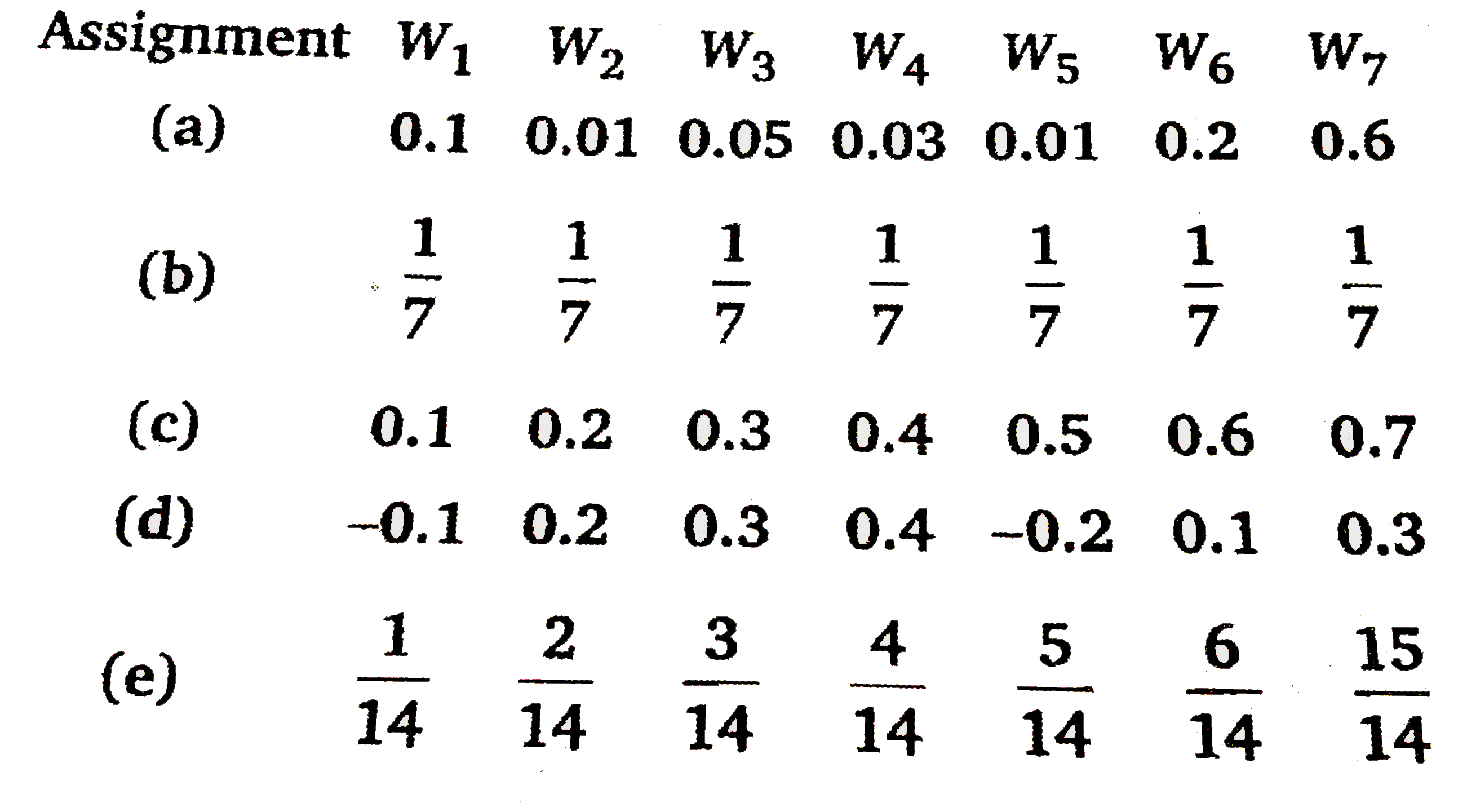A fair dice is thrown three times. If p, q and r are the numbers obtained on the dice, then find the probability that ip+iq+ir=1, where I=√−1. Solution in Bengali
The possbile values of p, q and r are (1, 3, 4), (3, 4, 5), (4, 4, 6) and (2, 4, 4) not in order.
∴ Number of favourable cases = 3!+3!+3+3=18
Total number of cases = 6×6×6
∴ Required probability = 18216=112
Topper's Solved these Questions
- PROBABILITY I BOOK - CENGAGE PUBLICATIONCHAPTER - PROBABILITY I EXERCISE - Solved Example
9 Videos
- PROBABILITY I BOOK - CENGAGE PUBLICATIONCHAPTER - PROBABILITY I EXERCISE - Exercise 9.1
6 Videos
- PROBABILITYBOOK - CENGAGE PUBLICATIONCHAPTER - PROBABILITYEXERCISE - All Questions
470 Videos
- PROBABILITY IIBOOK - CENGAGE PUBLICATIONCHAPTER - PROBABILITY IIEXERCISE - MULTIPLE CORRECT ANSWER TYPE
6 Videos
Similar Questions
When a fair dice is rolled, the number that comes up top is a number between one to six. Assuming we roll the dice once, to check the possibility of three coming up.
View SolutionWhich of the following cannot be valid assignment of probabilities for outcomes of sample space S={W1,W2,W3,W4,W5,W6,W7}

View SolutionA coin is tossed three times, consider the following events. A : ‘No head appears’, B: ‘Exactly one head appears’ and C: ‘Atleast two appear’. Do they form a set of mutually exclusive and exhaustive events?
View SolutionLet EandF be two independent events. The probability that exactly one of them occurs is 1125 and the probability if none of them occurring is 225. If P(T) denotes the probability of occurrence of the event T, then (a) P(E)=45,P(F)=35 (b) P(E)=15,P(F)=25 (c) P(E)=25,P(F)=15 (d) P(E)=35,P(F)=45
View SolutionIf p and q are distinct primes and xxDelta = |(sqrt(pq),p i,q+sqrt(pq)),(psqrt(q),sqrt(p)+psqrt(p)i,qsqrt(p)+sqrt(p) qi),(qsqrt(p), sqrt(p)+psqrt(q)i,qsqrt(q)+p i)|xx
View SolutionTwo dice are thrown at the same time. Find the probability of getting
(i) Same number on both dice.
(ii) different number of both dice.
View SolutionA fair dice is thrown three times. If p, q and r are the numbers obtained on the dice, then find the probability that ip+iq+ir=1, where I=√−1.
View Solutionदो भिन्न-भिन्न पाँसे एक साथ फेके जाते है तो उन पर प्राप्त संख्याओ के होने की प्रायिकता ज्ञात कीजिए : (i) योग सम (ii) गुणा सम
View Solutionएक पाँसे को एक बार फेंका जाता है। प्रायिकता ज्ञात कीजिए की वह :
(i ) एक विषम संख्या प्राप्त होती है,
(ii ) 2 से 6 के मध्य एक संख्या प्राप्त होती है।
View Solutionदो पाँसों को एकसाथ फेंका जाता है। प्रायिकता ज्ञात कीजिए कि (i ) दोनों पाँसों पर समान संख्या प्राप्त होती है, (ii ) दोनों पाँसों पर प्राप्त संख्याओं का योग 8 है, (iii ) दोनों पाँसों पर प्राप्त संख्याओं का योग 9 से अधिक है।
View SolutionThree numbers p, q, r are such that pq=qr, where p,q,r>1 then the correct relation between q and r is :
View SolutionIf (1−i1+i)50=p+iq(i=√−1) ,then Find p and q
View Solutionयदि p,q,r वास्तविक है तब △=∣∣ ∣ ∣∣p2−ii+12+iq3+i1−i3−ir∣∣ ∣ ∣∣ सदैव है
View SolutionTwo dice are thrown at the same time. Find the probability of getting
(i) Same number on both dice.
(ii) different number of both dice.
View SolutionA fair dice is thrown three times. If p, q and r are the numbers obtained on the dice, then find the probability that ip+iq+ir=1, where I=√−1.
View SolutionIf ip=iq where i2=−1 then p-q is divisible by 4.
View Solution
